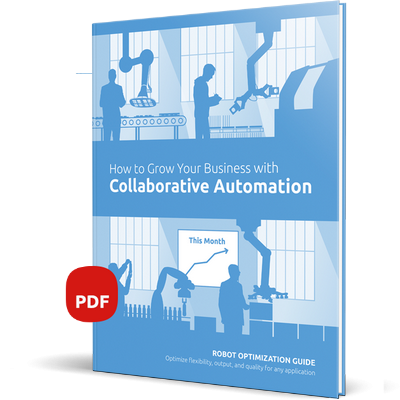#ThoughtsOnRobots: Mladen Milicevic


In this interview with OnRobot, Mladen Milicevic, CEO at Unchained Robotics GmbH, provides tips on how to get started with automation and shares his views on what is next in collaborative applications.
More and more customers are recognizing the advantages of collaborative applications, says Mladen Milicevic, CEO at Unchained Robotics. He has seen a strong increase in inquiries and new implementations.
Fast and easy implementation of low-cost automation
Customers focus especially on the space-saving capabilities and the fast and easy implementation offered by collaborative applications.
"I think that the growing number of implementations is mainly due to the fact that, on the one hand, integrations are becoming much easier and, on the other hand, the total cost of the system remains comparatively low," says Mladen Milicevic.
Unchained Robotics concentrate mainly on Pick-and-Place applications in logistics processes of manufacturing companies. These are common applications that have been automated for years, but collaborative applications make implementation much easier even for smaller batch sizes.
2 steps to get started with automation
Mladen Milicevic recommends that you start any automation project with these two steps:
Step 1: The 3 R's - Research, Robot and ROI
The first thing you need to do is to identify the process you want to automate and its needs and requirements.
- Which processes in my company can I rethink?
- Which processes are easy to solve and make the daily work of employees easier?
- Which machine processes can I directly link to in order to automate heavy, repetitive or dirty activities?
At this point, you need to look at the bigger picture. A pure focus on orders is not the right approach, Mladen Milicevic explains. The focus should be on the process or the machine. What goes in or out of it in terms of changing jobs or objects is another topic.
Step 2: Concept design
In this second step - the concept design phase - the main topic is how the different robots, grippers, image processing and other accessories are going to be connected with each other in a solution-oriented way.
The goal is to check which solutions are possible and to get an estimate of the costs. At this point the layout for the automation begins in order to obtain a fundamental picture of the requirements.
Keep it simple!
Mladen Milicevic emphasizes that you keep it simple when you start automating your processes using collaborative applications.
"I cannot express how important this is. The most cost-efficient use cases are those that can be implemented pragmatically," he says.
Primarily, he explains, one should take a step back and analyses the current process the same way a robot would solve it:
- How are components supplied and how are they removed again?
- Can I adapt the packaging, feeders, storage locations or requirements so that all components become suitable for automation?
How to get your employees on board with automation
Another important factor in a successful implementation of collaborative applications is buy-in from your employees. Mladen Milicevic believes that good communication and choosing the right applications are key:
"We have found that companies who communicate very openly about the automation process also receive the best feedback from their employees," he says.
While highly specialized applications are very costly to automate and usually require a lot of planning, simple applications involving interaction between humans and machines can be implemented easily and quickly.
"Usually, the employees are happy about this because, in most cases, the steps that are automated are perceived as 'undesirable' anyway," Mladen Milicevic explains.
Next up: "Do it Yourself" robotics
Mladen Milicevic believes that it should be possible for customers to plan their own implementation of collaborative applications.
Collaborative applications are designed and built to be easily and safely integrated into the manufacturing process. As such, he says, the best thing is implementing them yourself as a company.
However, there are still many regulatory hurdles such as safety requirements. And not enough information and options are available to customers. Not yet, anyways.
"The great potential of 'Do it Yourself' robotics is currently not fully utilized - not by a long shot. In future, we will provide more and more tools and applications that make it possible for customers to integrate collaborative applications independently - quickly, easily and safely," says Mladen Milicevic.
-----------------------------------------------------------------------
#ThoughtsOnRobots

|
How to Grow your Business with Collaborative Applications
With the dawn of smarter, more adaptive tooling, robots can now function with greater speed, strength, safety and precision, accomplishing a wide range of tasks, while maximizing ROI. Learn more on how you can enable faster production at lower costs by downloading our free eBook.
GET THE FREE eBOOK
|

|

